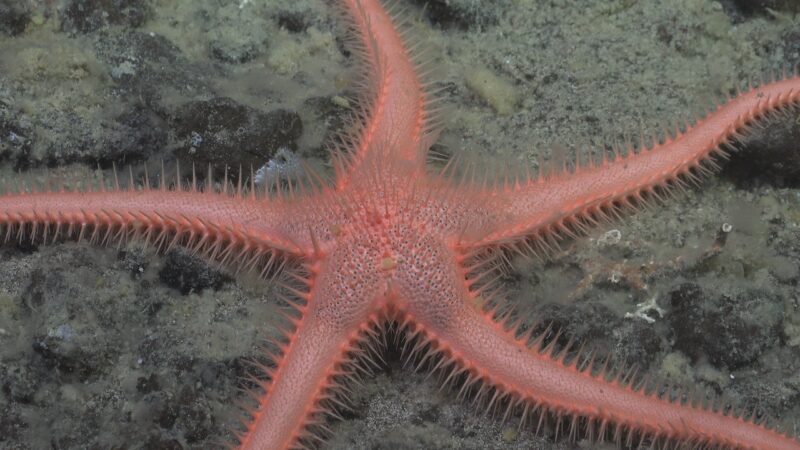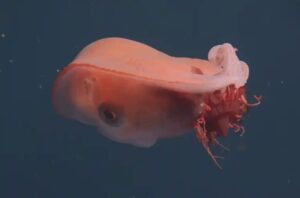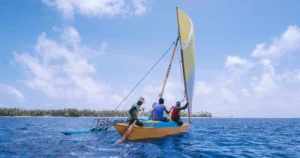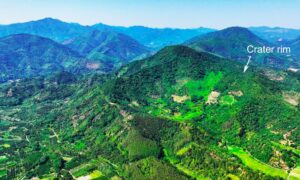Researchers have recently uncovered at least 30 unknown deep-sea species around Antarctica. These include a bizarre carnivorous sponge they nicknamed the “death ball.”
Two different vessels explored volcanic calderas, the South Sandwich Trench, and the seafloor around Montagu and Saunders Islands.

The research vessel ‘Falkor (too).’ Photo: Paul Satchell/The Nippon Foundation-Nekton Ocean Census/Schmidt Ocean Institute
The Southern Ocean is one of the most poorly studied bodies of water on Earth, and new discoveries are not surprising. Just north of Montagu Island, some 3.5 kilometers below the surface, researchers encountered a bizarre-looking sponge with white stalks tipped with what looks like ping pong balls, and covered in microscopic hooks. The new sponge is carnivorous. Any small creature unlucky enough to brush against it, mostly tiny crustaceans, is snared by the hooks and slowly absorbed.
A horrible way to go
“They’re doomed, unfortunately,” said Michelle Taylor from the University of Essex, who led part of the expedition. “To be absorbed slowly over time is a grim way of going.”
The “death ball” wasn’t their only find. Among the 2,000 samples collected, they also found an iridescent worm, at least one unknown species of sea star, and several new crustaceans. At the moment, just 30 percent of the collected specimens have been examined. From this small fraction, 30 new species have already been confirmed.

A new species of sea star. Photo: The Nippon Foundation-Nekton Ocean Census/Schmidt Ocean Institute
The two expeditions were part of the broader Ocean Census program, a collaboration of over 500 institutions from around the world. In 13 expeditions, the program has discovered over 800 new species. Its goal is to find many more. Currently, we are aware of approximately 240,000 marine species, but scientists estimate that there are actually between one and two million.
Classifying new species often takes years, but these specimens go directly to the University of Magallanes in Punta Arenas, Chile. There, international taxonomists work side by side to verify new species.
“By coupling expeditions with species discovery workshops, we compress what often takes more than a decade into a faster pathway while maintaining scientific rigor,” said taxonomist Tina Bolstad.

A new iridescent worm. Photo: Jialing Cai/The Nippon Foundation-Nekton Ocean Census/Schmidt Ocean Institute






